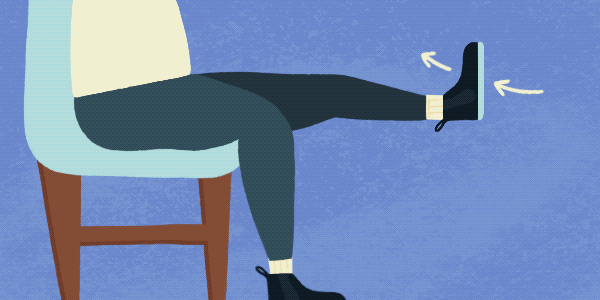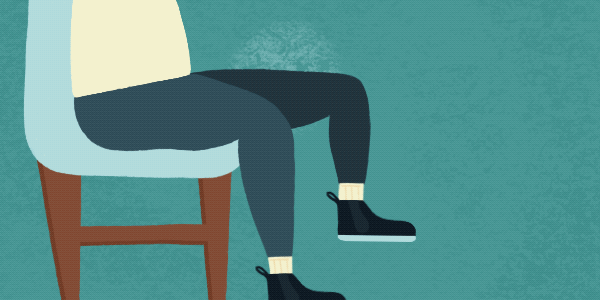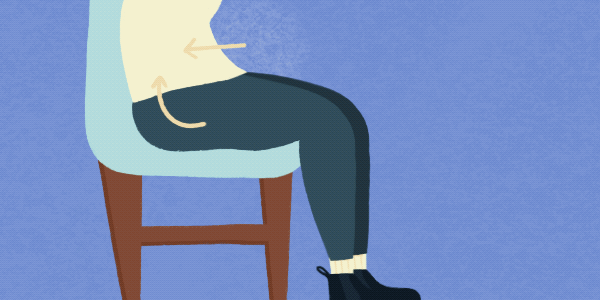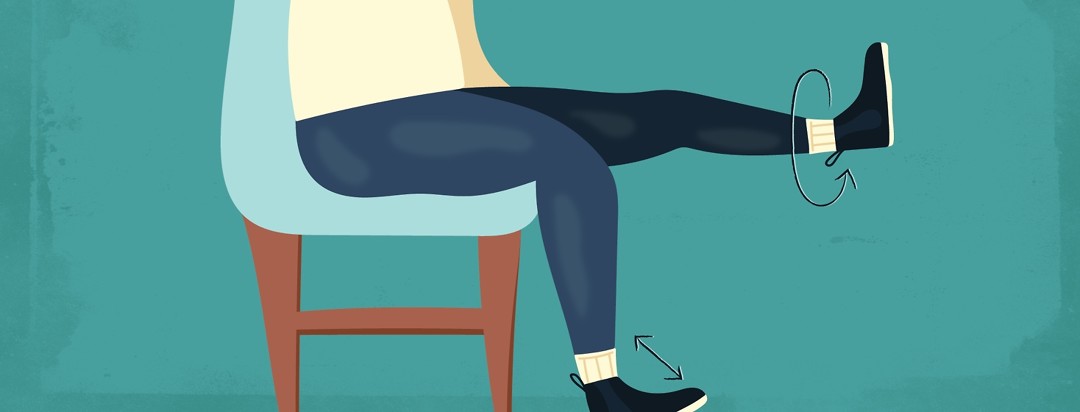Momentary Relief Part 1: Stretches for My Restless Legs
One of the first, and most prolific, things I do when my restless legs are restless, is to stretch. I find stretching offers wonderful - albeit very short-lived - relief and is something I can do anywhere, anytime.
Not only does stretching momentarily relieve my RLS symptoms, but it also increases flexibility and mobility which is good for my overall wellbeing.
Stretches I can do anywhere
Restless legs syndrome (RLS) can occur almost anywhere on the body, but as the name suggests, it is most commonly experienced in the legs. So that is where I stretch. I start with stretches I think of as “hidden” - movements I can do anywhere without calling attention to myself.
Sitting in the cinema, stuck on an airplane, travelling in a car. Any place where lolling around on the floor is considered awkward and not really socially acceptable.
Pointing and flexing my toes

Pointing and flexing the toes is my first port of call. Pointing stretches the tops of the feet and up into the shins, while flexing stretches the calves and ankles and is also good for the plantar fascia. I generally try to point and hold for at least 10 seconds, then flex and hold for another ten seconds - alternating between the two for a few minutes.
Sometimes I do one foot at a time, sometimes both at once. After a few static stretches I also do slow foot circles in each direction.
Upper thigh isolations

After my feet I move up to the hamstrings - the upper thigh - squeezing from knee to thigh as hard as possible, trying to isolate into the muscle without squeezing my butt at the same time. I’m saving the butt for the next exercise.
Concentrating on isolating that hamstring is also part of the distraction technique that helps me with RLS. Again, I hold that squeeze for about 10 seconds, alternating each side and try to remember to keep breathing through the stretch.
Working my glutes
Then I move to my butt. During some personal training a few years back, I learned I have lazy glutes. A somewhat derogatory term for a butt that lets other muscles take over its job, leading to all sorts of problems including potential back pain. There are a million articles on the importance of having strong glute muscles so strengthening them while trying to alleviate RLS is just a bonus.
I consciously activate one glute muscle at a time by squeezing each butt cheek as hard as possible. I can do this sitting or standing. Lying down. Walking. Anywhere at all. But it is important to ensure the butt muscle activates before the hamstring or back muscles try and interfere.
Isolating into the muscle brings the maximum amount of strengthening and is ideal for my RLS. I squeeze each butt cheek, sometimes alternating quickly between each cheek and sometimes holding the squeeze for up to 10 seconds. I also work on doing both together, but I find I have increased my overall strength and alleviated RLS better when working them one at a time.
Strengthening my pelvic floor
After the all-important glute stretching, I move onto the pelvic floor. You are never too young to be doing pelvic floor exercises. The simplest way I was taught to identify the pelvic floor muscles is to imagine you’re trying to hold in a fart. It might sound indelicate but we all fart and learning to hold it in is a handy skill.
Once again, I squeeze and hold for around 10 seconds, trying to isolate into the pelvic floor without tensing all the surrounding muscles. And keep breathing. It can help to imagine the pelvic floor muscles as a flight of stairs where you gradually move from one step to the next, so over the count of 10 seconds the squeeze gets stronger with each “step”.
Ending with a pelvic tilt

The final stretch I do is more subtle and particularly helpful for me as I have a lot of lower back pain associated with my RLS. I do a pelvic tilt forward which activates the lower abdominal muscles - imagine pulling your belly button towards your spine at the same time.
It is just subtle enough that I can sit in the theatre and my neighbour wouldn’t know. I rock the pelvis forward, hold for 10 seconds, then rock it backwards a little and hold. This stretch feels particularly good for me as this is the area where my RLS always feels like it originates from.
A little relief goes a long way with RLS
I also do dynamic stretches that require more space and movement, which feel great but aren’t suitable for confined spaces. I’ll save that list for next time!
From my ankles to my hips, I rotate through the static stretches and then start again. Stretching doesn’t cure my RLS but it does offer me a few moments reprieve and something to do if I’m awake during the wee hours of the night.
This article is part of a two-part series. Check out Part 2: Even More Stretches for My Restless Legs. Does stretching bring you any relief? Which stretches do you find helpful? Tell us more in the comments below!
Interested in reading more about lifestyle changes for symptom relief? Explore our featured collection on lifestyle changes and alternative treatments for RLS.

Join the conversation